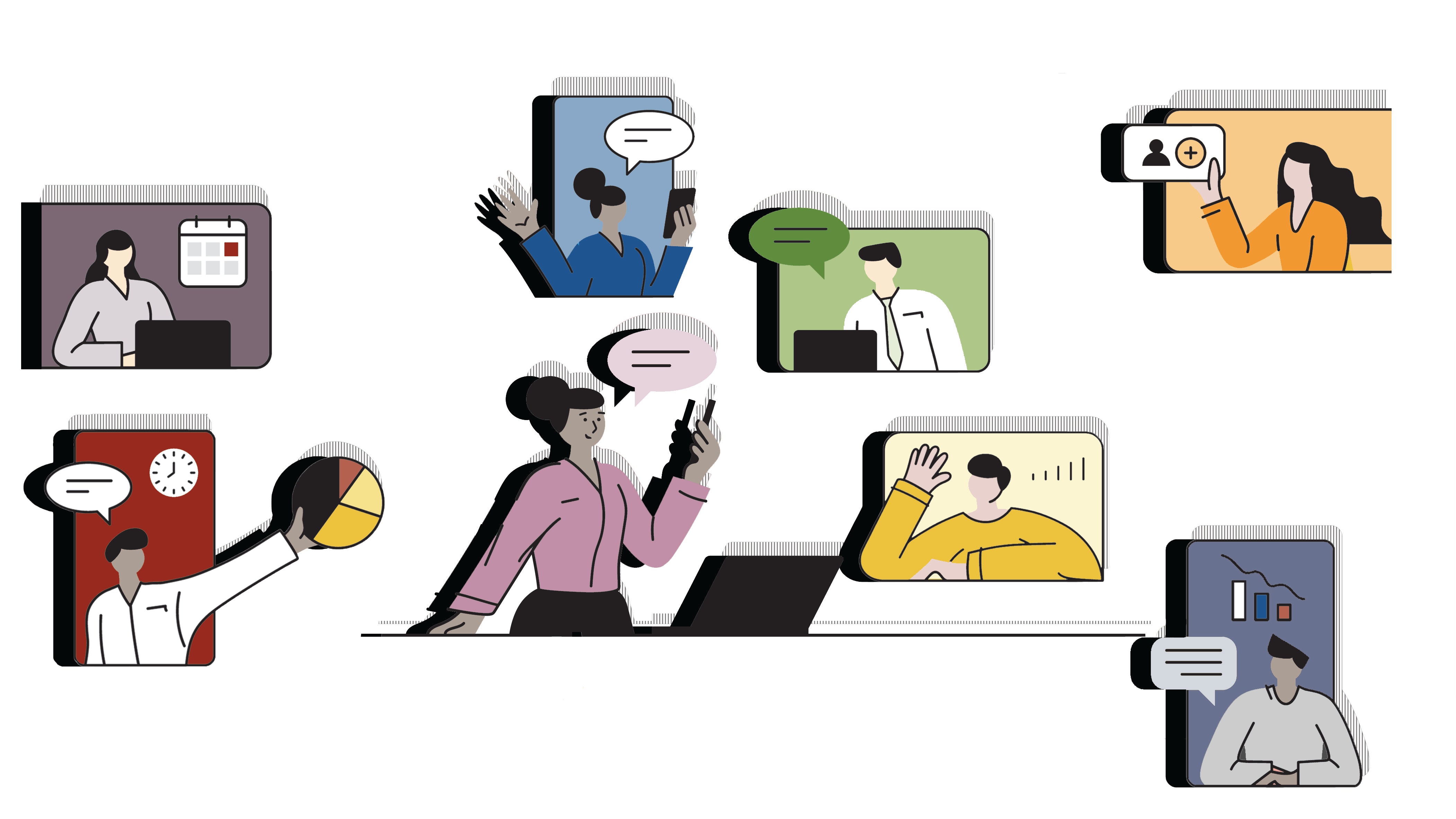The current COVID-19 crisis has completely dismantled routine business procedures forcing millions of employees to work-from-home.
Many of these employees have never worked from home before and more importantly, many of these businesses were not prepared to adapt to a “Work From Home” environment.
For the many businesses who are used to a localized work environment like an office, this time is particularly difficult because new habits, mindsets, and procedures need to take place.
Evidently, your team culture is on full display during times of crisis and you are faced with the reality of your past actions.
If you have a positive team culture, then you are adapting to the crisis in stride and doing what’s best for your business and experiencing the benefits of your decisions. Your team is working as a cohesive unit in unison with each other and collaborating to do what’s best for the best business, while being supportive .
If your team culture is negative, then you are facing the repercussions of your prior decisions right now. Your team is dysfunctional and unproductive. They do not work efficiently and respect for upper management is waning. If upper management has routinely created a feeling of resentment in their employees then they are dealing with the consequences right now.
This is a great time to reflect, refocus, and double-down on building a positive team culture that can thrive in a “Work Home Environment”
In this article I will be highlighting successful tactics and principles that you can use to build a positive team culture while working remotely that I learned from a conversation I had with Nicole Wolosoff Esq., President of Boston National NY.

She is a master in building team culture that balances elite performance & fun.
Due to her ability to lead and build a positive work environment, she and her team have been able to adapt successfully to the crisis in a remote environment.
As the founder of Leave Normal Behind, I am always speaking with individuals like Nicole who are “above normal” – becoming the best version of themselves, giving back, creating things that matter, spreading love, and encouraging others to do the same.
Below Nicole shares tactics and strategies that she uses to build a positive team culture that enable her to build a successful NYC company that is growing year-after-year in the real estate title industry.
____
We are going to break down this article into 3 parts:
- The Hiring Process
- Building Positive Team Culture
- Establish Executive Presence
By the end you will have good insights that you can implement with your team right away.
___
The Hiring process
The hiring process acts as a prevention measure against a negative work environment.
As they like to say, “An ounce of prevention is worth a pound of cure.”

In addition to being a great executive who manages your people with compassion and accountability, you must hire a team that is competent and fits the personality profile that you are looking for in your business.
Having a positive, cohesive work culture where the team thrives is an invaluable asset.
Talk about standards and expectations early on.
By setting expectations you will attract individuals that are similar and create a bond between individuals who have decided to “buy-in”.
Not only is this authentic, it is strategic and will attract the right fits and repel the wrong ones.
Nicole is able to attract coachable talent that proactively works well together and has bought into a teamwork culture that vets itself preventing any “bad actors” from entering the team.

As Nicole says, “The team will weed you out. People need to understand two sides of business, bonding & very serious expectations. We empower each other to rise to our potential and receive the benefits of doing so, while having fun along the way.”
Her secret characteristic that she looks for in potential employees, as she likes to put it, is “Smart with a touch of weird.”
That sums it up perfectly.
Hire people who are competent, talented, and open-minded.
Look for people that buy-in to a company lifestyle. People who are excited for growth.
Remember, most of us are around the people we work with more than our own family and friends so become friends with everybody.
If you have not done the best job hiring, how can you build camaraderie now ?
Open up 1-1 communication.
Ask for feedback, set processes, make everyone feel included and part of the team.
Find innovative ways to get people together and get them to open up in order to get people to feel connected.
Use Pandemic for connecting and building deeper relationships. Ask your employees personal questions.

Start in small teams and groups to Create Camaraderie.
Once you have a core group of fun, open-minded, not “cliquey” team members, then it becomes contagious.
Get a few people to believe in the vision with you right now and it will permeate into company culture and others will hop on the bandwagon because they see others doing so as well.
Doing this is no easy task, but you can do it.
Ask your team questions like – “ What can I do better as an executive?”, “What are you dealing with right now?”
You do not want people to feel a sense of hierarchy, yet there is an unspoken hierarchy that is respected in order to achieve the common goal; essentially everyone plays their role.
If you’ve played any kind of team sport or been in the military, then you will understand this kind of philosophy.

Everyone plays their role to the best of their ability and then collectively this enables you to all win together.
When you create this kind of team culture and environment there is no need to verbalize your authority like many managers and executives do. This is not good to do, please do not do this because it tears at the inner fabric of your team culture, dynamic, and environment.
Be a very appreciative boss and respect others and they will give you the mutual respect that you deserve.
Set the boundary between “friends” and “business”.
Find the balance between the two so you can experience the benefits of both.
Be genuine and let people know where you’re coming from.
When people understand where you are coming from, they are more open to listening and doing what’s needed of them because they can see the same vision and more fully understand their role within that vision.
Building Positive Team Culture In “Work From Home” Environment
Nicole has built a very collaborative and positive team culture that thrives on the foundation of friendship and performance.
Her team is bought-in and together they work hard and have fun doing it.

They support each other beyond business and go on “digital” walks together where they sync their fit-bits or apple watch and go on walks together,
Every other day they are doing ZOOM workouts to build camaraderie, release stress, and stay active & healthy.
They have established Zoom happy hours and use apps like House Party for group hangouts that are fun & interactive.
She suggests buying apparel with company branding to make everyone feel like they are part of a team or family.

Each new employee receives a set of fuzzy slippers that they are expected to wear at work to show that work is meant to be a comfortable place to be.
As an executive, reinvest in your team. As they grow, they will get excited.
Nicole and her team have gone to Broadway shows together, hangout outside of work, and experience the benefits in team efficiency and performance.
So implement outside work activities that you and your team can enjoy together.
Building Executive Presence
Duplicating “Executive Presence” within your team separates good from great.
If you can do this, then you will experience positive results in your business right away.

The Jack Welch Management Institute, founded by Jack Welch, former CEO of General Electric, believes that Executive Presence is one of the top two skills needed in order to advance your career.
There are different leadership skills – in order to properly lead you have to understand who you are as a worker AND a person.
In order to have executive presence you must:
- Identify Problems
- Present Solutions
- Oversee Execution
Working to duplicate executive presence within your team will yield you positive results because employees will learn to be more proactive and self-manage.
This makes your company more efficient and clients feel this experience.
Here are some steps to building executive presence:
- Share the vision
- Open to feedback
- Set standards
- Empower and encourage
As an executive, evaluate how your people learn & socialize individually in order to build personal relationships and duplicate executive presence within them by having the foundation of friendship to do so.
____
Be inclusive and let people know that they are a part of helping the company grow.
Each member of the team should feel like they are a part of the reason why the company is growing.
Empower people with a sense of ownership around the results. Implement a “champion mindset”.
Incorporate a little bit of fun because everyone is bored and it’ll create more connection. This connection will make your people more involved and excited to work.
Do something that the team does not expect, it just might transform your company as a whole.
If you always do what you always do, then you’ll always get what you always got. So if you change it up, you may get a new result.
Remember, “Nothing changes, if nothing changes.”
If you, or anyone you know, is leaving normal behind, connect w/ me: [email protected]


